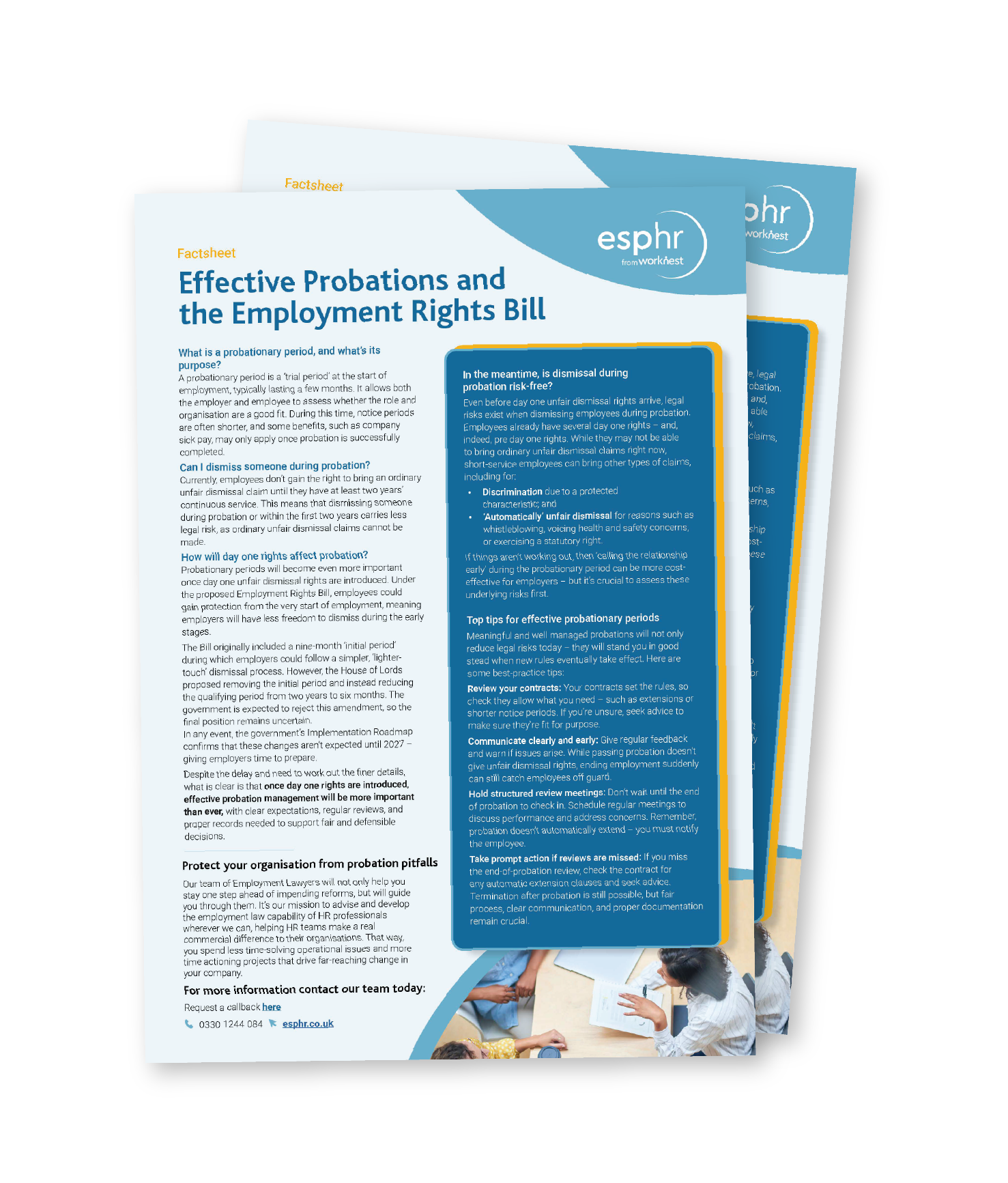Mental health-related absences continue to significantly impact UK workplaces. Recent data reveals that in 2023/24, approximately 16.4 million working days were lost due to work-related stress, depression, or anxiety, accounting for nearly half of all work-related ill health cases.
For employers, this surge in mental health related absence creates two main concerns: not only does it equate to a costly loss of productivity, but perhaps more importantly, absences of this nature are notoriously tricky to deal with due to their intrinsic legal sensitivity.
With levels of these types of absences continuing to climb with no signs of slowing down, employers need to equip themselves with the knowledge and protocols to address these scenarios fairly and compliantly.
Understanding the scenario
Consider a hypothetical situation: An employee has taken multiple short absences over three months, totalling 20 working days, citing reasons such as low mood, stress, anxiety and depression. This pattern suggests ongoing mental health challenges.
The line manager’s first step would be to gather more information about the employee’s condition. This may be obtained from their personnel files or from the employee themselves. With this in mind, the line manager would need to set up a private meeting with the individual to discuss their attendance record. They should be asked about the history and severity of their conditions, and whether they are currently receiving any medical support outside of work.
It may then be appropriate to ask for the individual’s consent to write to their GP for further information about their condition or, alternatively, ask if they would be happy to see an Occupational Health (OH) practitioner. The line manager should then signpost them to any other support options available, such as an Employee Assistance Programme or a counselling service.
In terms of a medical report, that can be from either a GP or an OH professional. A GP may not, however, be willing to advise on adjustments, whereas an OH report will naturally be more workplace-centric.
Keep in mind that not all employees will feel comfortable with an employer approaching their GP or attending an OH appointment. Let them know that they have the right to see the report before it is released.
What are the legal risks of managing mental health related absence?
When dealing with mental health absence scenarios, employers must first consider one fact above all: an individual who has been absent from work by reason of illness may be protected by disability discrimination law under the Equality Act 2010.
This detail could potentially be crucial. Where disability is concerned, there is no minimum qualifying period for discrimination claims and no upper limit on compensation, so compliance with the relevant requirements of the act is not optional.
However, this hinges on whether the absent employee meets the legal definition of having a disability. According to the Act, this criteria applies if:
- The individual has a physical or mental impairment
- The impairment has an adverse effect on their ability to carry out normal day-to-day activities
- The effect is substantial
- The effect is long-term.
If all of these criteria apply, the employee will be considered disabled in the eyes of the law.
Additionally, employers must be aware of the six main types of disability discrimination prohibited:
- Direct discrimination
- Indirect discrimination
- Discrimination arising from disability
- Failure to make reasonable adjustments
- Harassment
Let’s consider this legal guidance in the context of the scenario given above, supposing that the employee did provide consent for the employer to approach the GP.
The GP’s report confirms that:
- The employee takes medication for recurrent depression/anxiety
- They are fit to work but need workplace support for their condition
- An occupational health (OH) assessment is recommended for adjustments
At this stage, the employer should get consent to refer the employee for an OH referral. This would help to identify any reasonable adjustments, such as modifying the absence policy’s trigger points. Any agreed support plan should continue but be regularly reviewed and adjusted as needed.
How long before dismissal is an option?
In the scenario above, involving frequent short-term absences, the employer should follow their absence management process. Only if and when it becomes a long-term issue – for example, the employee is signed off as unfit to work for several months – would dismissal be considered.
While the most common question in this scenario is how long an employee has to be absent, there are unfortunately no prescribed time periods set out in the law – it depends on a series of factors.
Unless early medical evidence is clear that a return to work will not be possible for many months or even years, a reasonable rule of thumb may be to not consider dismissal as a potential outcome until the six-month period.
Medical evidence is absolutely crucial. A report from the employee’s GP or OH can be obtained, but often with employees on long-term sick leave, the prognosis will be unclear, and it may not be possible to give a return to work date.
It must also be ascertained whether the employee has the benefit of permanent health insurance. In this scenario, it is likely that the employer would have to leave them employed and in receipt of that insurance.
It may also be worth assessing whether the individual is entitled to ill-health early retirement, as this may be an avenue to avoid outright capability dismissal.
But if no adjustments or arrangements can be made and it is unclear when or if the employee will be able to return to work, then the next stage will be to progress with a medical capability procedure, which could result in termination of the employee’s employment.
The employee should be invited to a meeting in writing and warned that dismissal is a possible outcome. The invite letter should also enclose all of the relevant documentation you will be relying on, and the meeting should discuss the history of absence, the details of the latest medical evidence, and whether the individual agrees with the findings of the GP of OH. If an employee is dismissed for medical capability, they would be entitled to be served notice as per their contract of employment.




